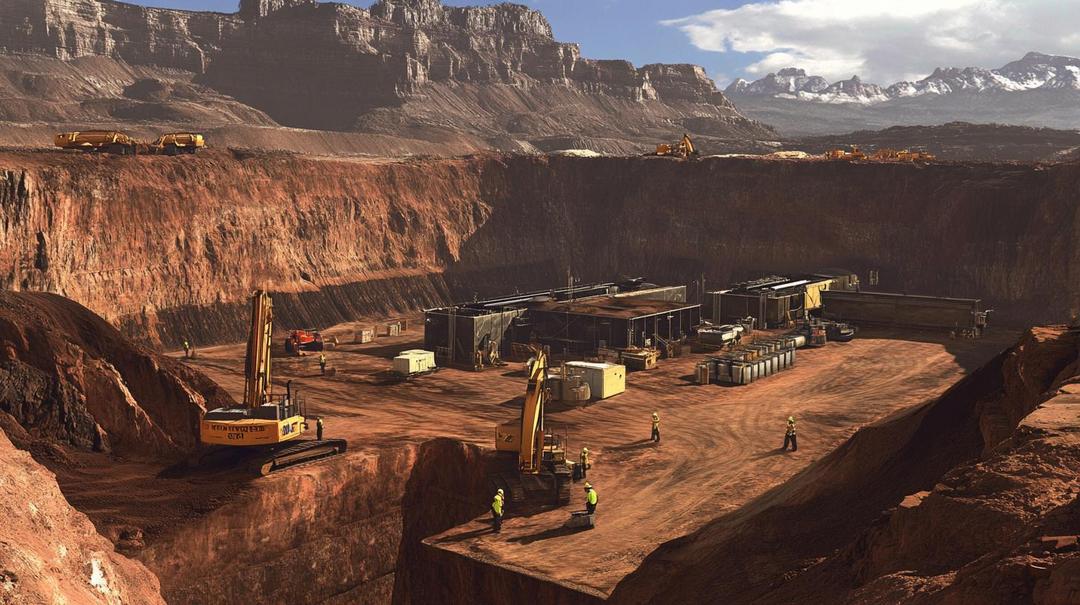The U.S. was once a global leader in rare earth production but now relies on imports for over 80% of these critical materials. Ironic, don’t you think? Logistics professionals, supply chain managers, and policymakers alike are grappling with this conundrum: how can America rebuild a robust, self-sufficient rare earth supply chain? What are the bottlenecks, the opportunities, and the head-scratching obstacles standing in the way?
Let’s break it all down.
What's Inside
What Are Rare Earth Materials, and Why Are They Crucial to America?
Rare earth materials are a group of 17 metallic elements that might sound obscure, but they’re actually fundamental to modern technology. These unique elements have special properties that make them critical in everything from smartphones to wind turbines. Unlike typical metals, rare earth materials are typically found in small concentrations and require complex extraction processes.
Industrial Importance
Rare earth materials impact multiple critical industries. Electronics rely on them to create powerful microchips and high-performance components. Renewable energy technologies like solar panels and electric vehicle batteries depend on rare earth elements for enhanced efficiency. The defense sector uses them in advanced guidance systems, communication technologies, and sophisticated weapon platforms.
The Global Supply Chain
Rare earth materials travel a complex and global path. Mining operations extract these elements from the ground, often in challenging geological environments. After extraction, the materials undergo extensive processing to separate and purify them. Specialized logistics networks then transport these refined materials to manufacturers worldwide, who integrate them into cutting-edge technologies.
Why Are Rare Earth Logistics So Challenging in the U.S.?
The United States faces significant challenges in rare earth material logistics, primarily due to heavy dependency on international suppliers. China currently dominates the global rare earth market, controlling approximately 80% of global production and processing capabilities.
Transportation and Infrastructure Barriers
Transporting rare earth materials is not simple. These elements require specialized handling due to their sensitive chemical properties. The U.S. lacks comprehensive infrastructure for efficient rare earth material movement, including limited specialized shipping containers and restricted rail networks designed for these unique cargo types.
Processing and Regulatory Complexities
Domestic rare earth processing facilities are scarce in the United States. Environmental regulations add layers of complexity to mining and refining operations, making it expensive and time-consuming to establish new processing centers. These regulatory frameworks, while important for environmental protection, can slow down domestic rare earth material development.
What Role Do U.S. Policies and Government Programs Play?
The U.S. government recognizes the strategic importance of rare earth materials and has begun implementing targeted policies. The Department of Energy has developed comprehensive strategies to support domestic rare earth material production and reduce international dependencies.
Federal Initiatives
Recent legislation provides financial incentives for companies investing in domestic rare earth mining and processing. These programs aim to create a more resilient supply chain by supporting research, development, and commercial-scale production of critical minerals.
Innovations Improving Rare Earth Logistics in America
Technology is playing a crucial role in transforming rare earth logistics. Advanced tracking systems using artificial intelligence and blockchain technology help monitor material movement with unprecedented precision.
Sustainable Approaches
Recycling represents a promising frontier in rare earth material management. Companies are developing innovative techniques to recover rare earth elements from electronic waste, creating a more circular and sustainable supply chain.
Who Are the Key Players in America’s Rare Earth Supply Chain?
Several companies are emerging as leaders in the domestic rare earth ecosystem. MP Materials, which operates the Mountain Pass mine in California, is a significant player in rare earth extraction. Logistics providers, such as specialized freight companies, are developing expertise in handling these sensitive materials.
Opportunities for Building a Resilient Rare Earth Supply Chain
Onshoring rare earth production presents challenges and opportunities. By reducing its reliance on foreign suppliers, the United States can enhance its national technological and economic security. Public-private partnerships will be crucial in developing comprehensive strategies for domestic rare earth material development.
The Road Forward: How America Can Lead in Rare Earth Logistics
Strategic long-term planning and sustained investment will be key to establishing American leadership in rare earth logistics. Learning from global leaders like Australia and Japan, the U.S. can develop a comprehensive approach to critical mineral management that balances economic, technological, and environmental considerations.
Conclusion
Overcoming the challenges of heavy foreign dependency, outdated infrastructure, and regulatory complexities is going to require the right mix of innovation, policy reform, and collaboration. There’s an opportunity for the U.S. to reclaim its competitiveness in this essential supply chain if creating a smarter, more resilient network for sourcing and processing rare earth materials isn’t too far out of reach.
FAQs
Why does America rely so heavily on imports for rare earth materials?
The U.S. lacks a fully developed domestic supply chain, including mining, refining, and processing facilities. This has led to dependency on nations that dominate the rare earth industry, such as China.
What are the main challenges in rare earth logistics?
Key challenges include transportation bottlenecks, limited domestic processing capabilities, and complex regulatory hurdles.
Which industries are most dependent on rare earth materials?
Industries like electronics, renewable energy, automotive (electric vehicles), and defense are highly dependent on rare earths for their operations and innovation.
How is the U.S. government addressing the rare earth supply chain issue?
The federal government has launched initiatives such as the Department of Energy’s guidelines on critical materials, funding for domestic mining, and public-private partnerships to improve supply chain resilience.
Can rare earth recycling help reduce supply chain vulnerabilities?
Yes, recycling rare earths from end-of-life products can significantly reduce reliance on primary sourcing and bolster sustainability efforts in the supply chain.


Dustin
Driven by a fascination with rare earth elements and their role in powering modern tech and engineering marvels. A true car and tech enthusiast, he loves exploring how these hidden heroes fuel our most exciting innovations.
You Might Also Like…